Visiting Omaha Beach in Normandy, one of the D-Day landing beaches in France, is a profoundly moving experience. Here is how to do it and what to expect.
Few things can prepare you for the emotional impact of visiting the Omaha landing beach in northern France. On a sun-drenched August afternoon, it was difficult to reconcile this golden beach and the happy holidaymakers frolicking in its gently rolling waves with the horror of June 6th, 1944.
To fully appreciate the tragic events that took place on Normandy’s beaches, you should visit Omaha Beach at least once in your lifetime. To get the best out of your visit, here is some background information, what to expect once you are there and how to plan your visit.
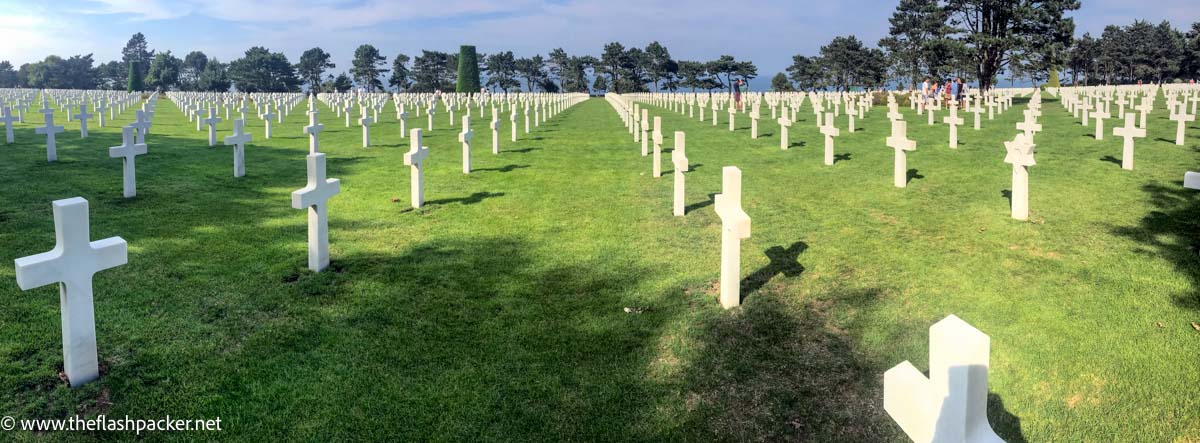
Some articles on this website contain affiliate links. This means that I may earn a small commission if you make a purchase through these links. As an Amazon Associate, I earn from qualifying purchases. Read the full disclosure here.
NORMANDY AMERICAN CEMETERY, OMAHA BEACH AT A GLANCE
Location: Colleville-sur-Mer in Normandy
Getting there: By car, bus or organised tour from Bayeaux or on a day excursion from Paris
Opening hours: The Normandy American Cemetery is open daily from 9 am to 5 pm (closing at 6 pm from April to September). Admission is free.
I strongly recommend arriving either when the cemetery opens at 9 am or towards the end of the day to hear the playing of The Last Post as the flags are lowered.
The Normandy D-Day Landings
The D-Day landings were pivotal in the liberation of Nazi-occupied north-western Europe in WW2. Codenamed Operation Neptune, the Allied seaborne invasion, involving British, American and Canadian troops, was the largest in history.
The 60-mile stretch of the Normandy coast was split into five assault beaches: Utah & Omaha (USA), Gold, Juno and Sword (UK & Canada). Preceded by an airborne invasion of more than 18,000 paratroopers into northern France, over 132,000 ground troops landed on these beaches.
Although the Allies did not immediately achieve their aim of capturing major Normandy cities such as Caen and Bayeux, this assault paved the way for liberating north-western Europe.
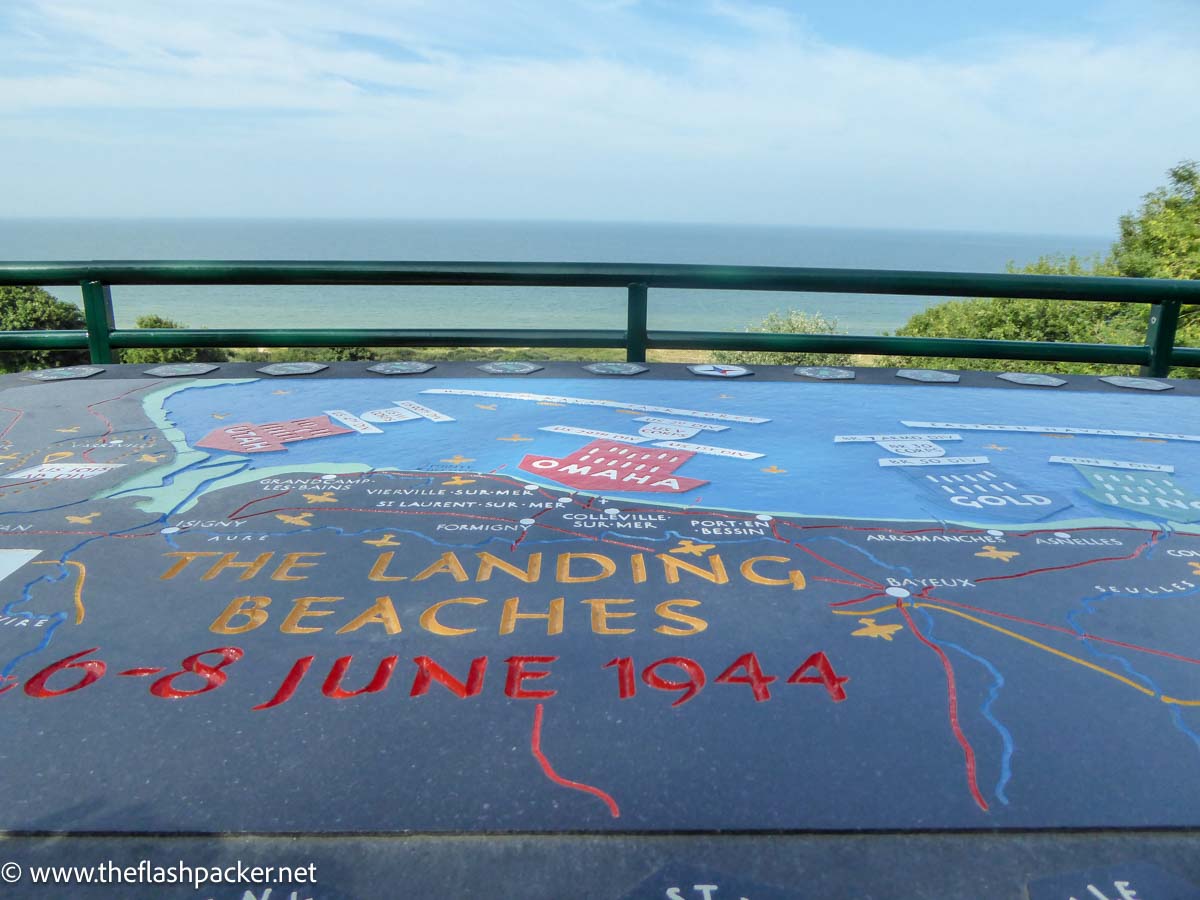
However, the Allied victory came at a terrible human cost.
It is estimated that there were more than 10,000 Allied casualties with 4,414 confirmed dead; German casualties are estimated at between 4,000 and 9,000. Allied casualties were heaviest at Omaha Beach with the Americans coming close to defeat.
The defences around the beach’s exits were not knocked out and small groups of survivors penetrated the beach by scaling the cliffs at the least defended points.
Although there are no confirmed figures for casualties at Omaha Beach on D-Day, estimates place the number of those killed, wounded or missing at between 2,00 and over 5,000. The Omaha Beach landing is brutally depicted in the opening of Steven Speilberg’s 1998 epic Saving Private Ryan.
What to Expect When You Visit Omaha Beach, Normandy
Today, a bluff overlooking Omaha Beach is home to the Normandy American Cemetery and Memorial. Covering 172 acres, it contains the remains of over 9,000 American military dead and is the largest war cemetery in Normandy.
Set in a landscaped park, fringed by Corsican pine trees, the graves are marked by gleaming white marble Latin crosses with a sprinkling of Stars of David. Here and there, people have placed a flower to remember the fallen or, in the case of the Jewish dead, a simple stone.
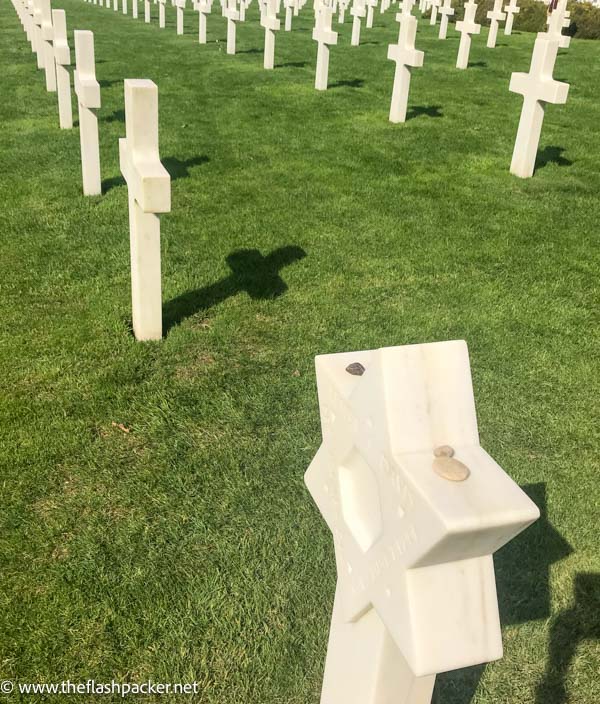
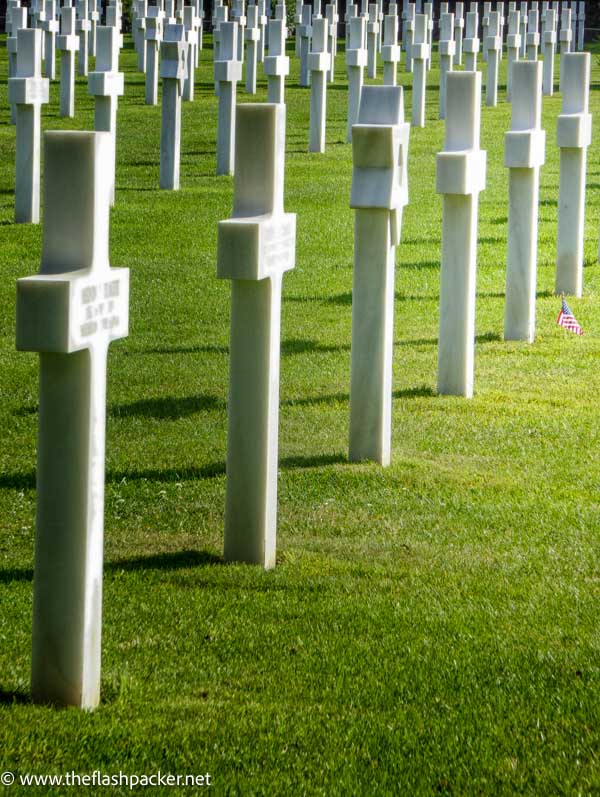
At the eastern end of the cemetery is a semi-circular limestone colonnade with maps and narratives of the military operations displayed in the two loggias at each end. Taking centre stage is a 22-foot tall bronze statue entitled The Spirit of American Youth Rising from the Waves, facing towards the graves.
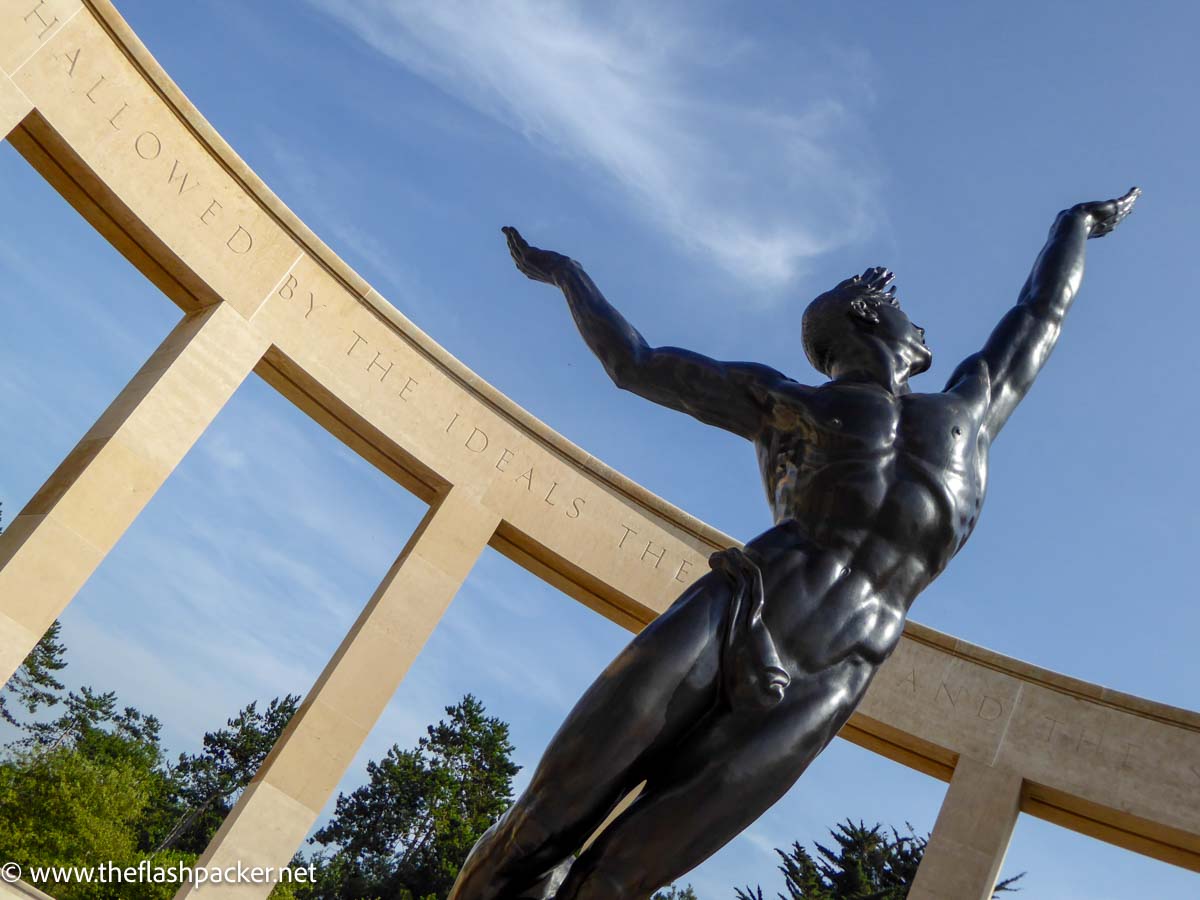
The remains of 1,557 Americans who lost their lives in the invasion of Normandy have never been located or identified. By way of remembrance, the Walls of the Missing behind the memorial are inscribed with their names.
Near the centre of the cemetery, a circular chapel, constructed from limestone and granite, points towards Omaha Beach. Above the chapel door is an engraved replica of the United States Medal of Honor, and its ceiling is adorned with a brightly coloured mosaic.
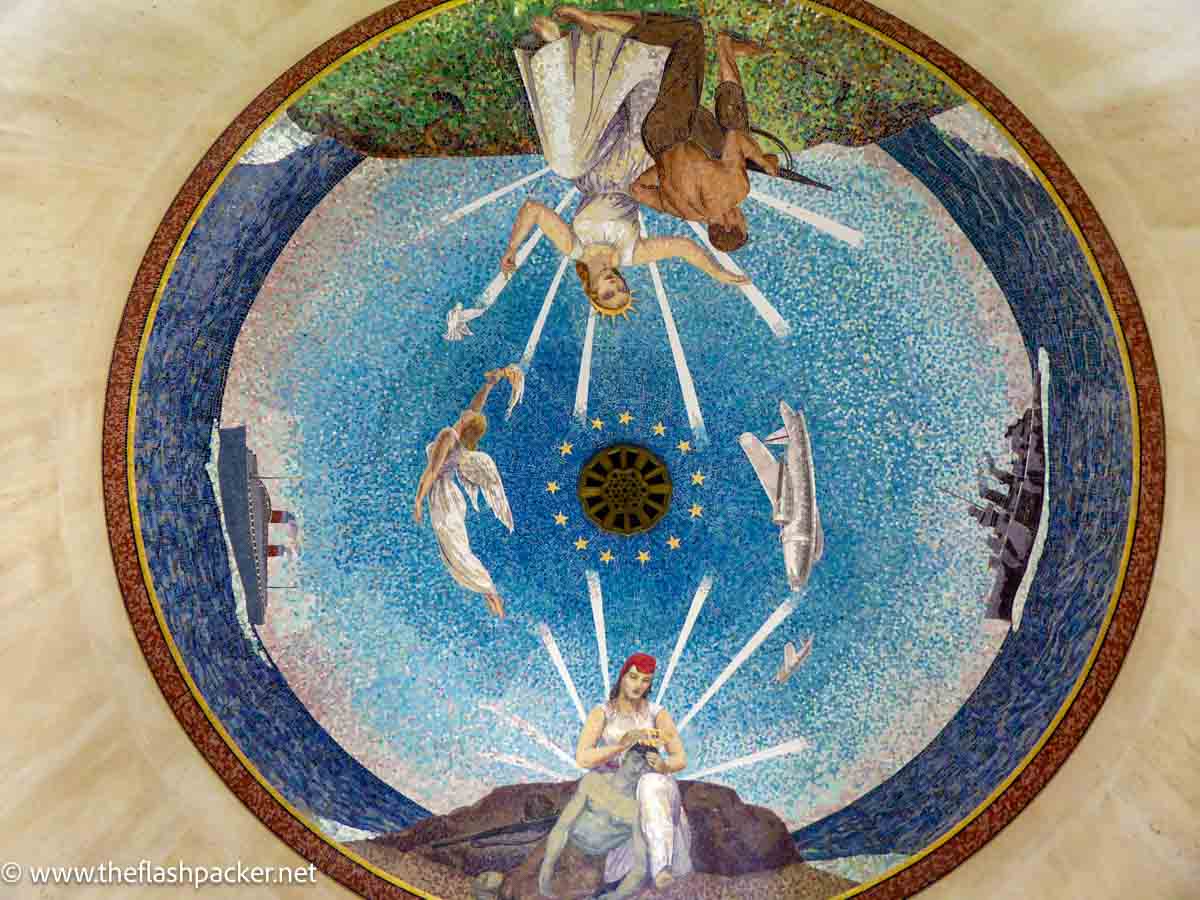
Near the car park is a small Visitor Center that houses uniform collections, weapons and vehicles from the D-Day invasions. As well as highlighting the significance of the Normandy offensive, it poignantly focuses on the daily lives of soldiers as individuals.
How to Get to Omaha Beach
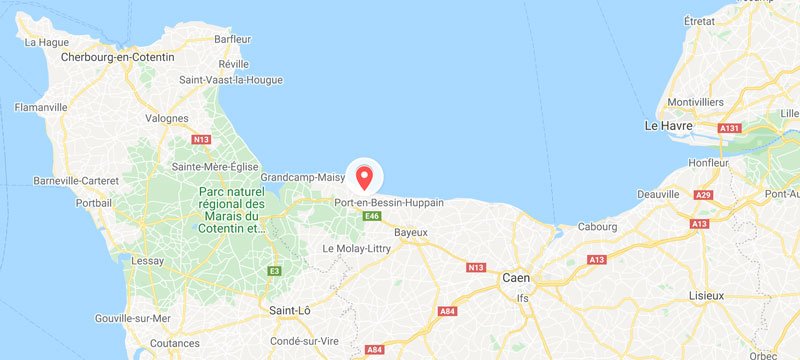
The Normandy American Cemetery at Omaha Beach is at Colleville-sur-Mer. There is limited public transport to Omaha Beach and it is best reached by car.
Follow the coastal road between Arromanches / Longues-sur-Mer / Bayeux and Vierville-sur-Mer / Pointe du Hoc. Turn off at the Overlord Museum (with tanks on display next to the main road). Ample free parking is available.
If you don’t have a car, base yourself in Bayeux. From here, you can take a bus or taxi, or join a day tour of the D-Day landing sites.
For example; other travellers love this half or full-day guided excursion from Bayeux.
Bus #120 takes 40 minutes to travel from Bayeux to Omaha Beach. The timetable is available here.
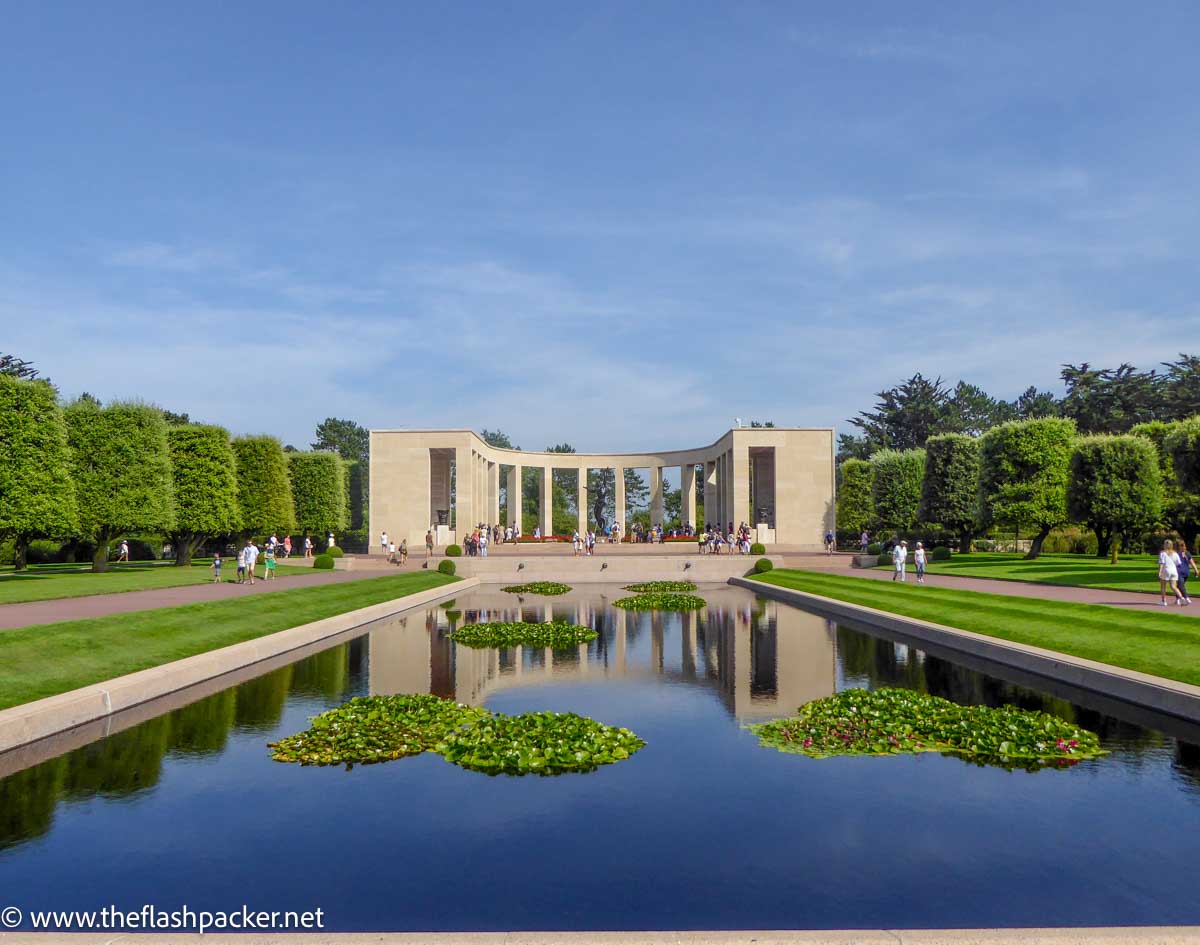
Visiting Omaha Beach as a day trip from Paris
It is possible to visit the Normandy D-Day landing beaches from Paris. The French capital is a three-hour drive from Omaha Beach; by train, it takes the same length of time to reach Bayeux.
If you don’t have a car, the best option is to visit Omaha Beach as part of an organised day trip from Paris. This will be a long day excursion but will typically include other landing beaches, museums and lunch.
This affordable full-day tour includes visits to the Normandy American Cemetery, Utah Beach Museum and Pointe du Hoc, lunch and cider and calvados tasting.
Where to Stay Near Omaha Beach
I visited Omaha Beach whilst staying in Honfleur for the weekend, travelling between Portsmouth and Normandy on Brittany Ferries. Honfleur is a charming base from which to explore Normandy and we rented Mansion Victorine, a wonderful apartment right in the thick of things.
However, if you are focusing your activities around the Normandy landing beaches, stay in the lovely town of Bayeux, about six miles inland from Omaha Beach. Home to the famous tapestry, it oozes charm.
Le Petit Matin, a guest house in an 18th-century building in the heart of Bayeux’s historic district, is highly rated by other travellers. Alternatively, Manoir Sainte Victoire is also very popular and in an excellent location.
Other Places to Visit Near Omaha Beach
Why Omaha Beach is Worth Visiting
Visiting Omaha Beach is a profoundly moving and humbling experience.
The endless sea of crosses is a visible reminder of the bravery of those who sacrificed their young lives for freedom from Fascism. I couldn’t help but imagine how they might have felt as they landed on those beaches 79 years ago.
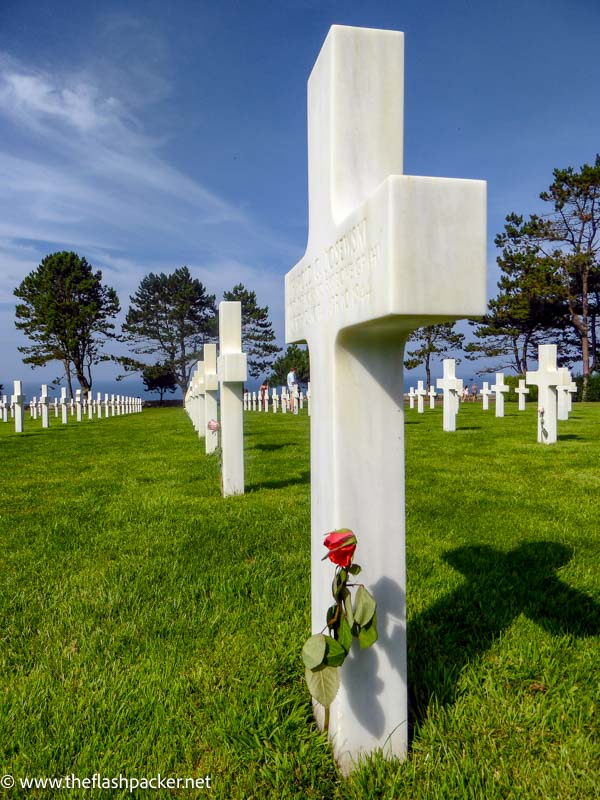
But I am going to leave the last word to General Eisenhower:
YOU ARE ABOUT TO EMBARK UPON THE GREAT CRUSADE TOWARD WHICH WE HAVE STRIVEN THESE MANY MONTHS. THE EYES OF THE WORLD ARE UPON YOU…I HAVE FULL CONFIDENCE IN YOUR COURAGE, DEVOTION TO DUTY AND SKILL IN BATTLE.
— GEN. DWIGHT EISENHOWER,
(Message to the troops sent just before the invasion of Normandy)
PS. If you’ve found this Omaha Beach guide helpful, Pin it to read later!
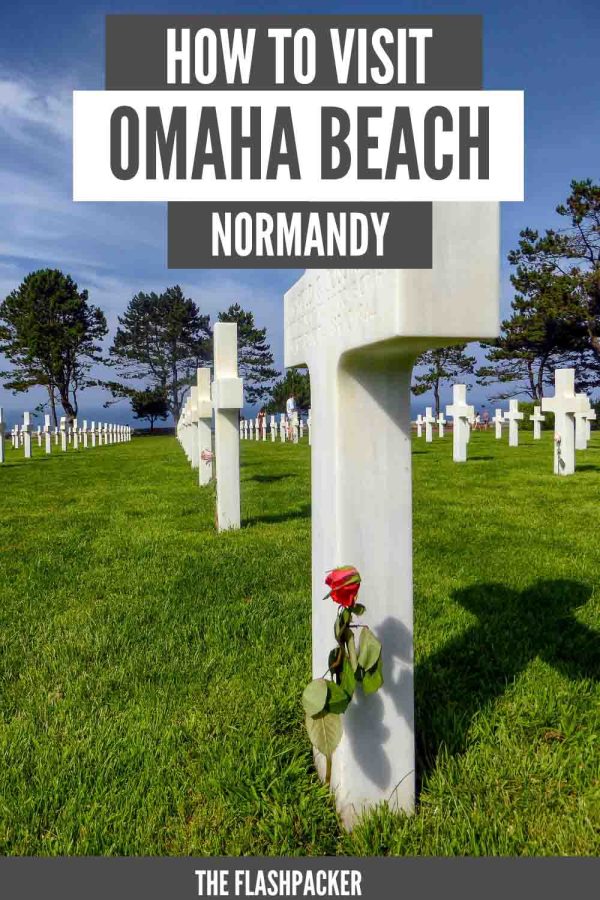
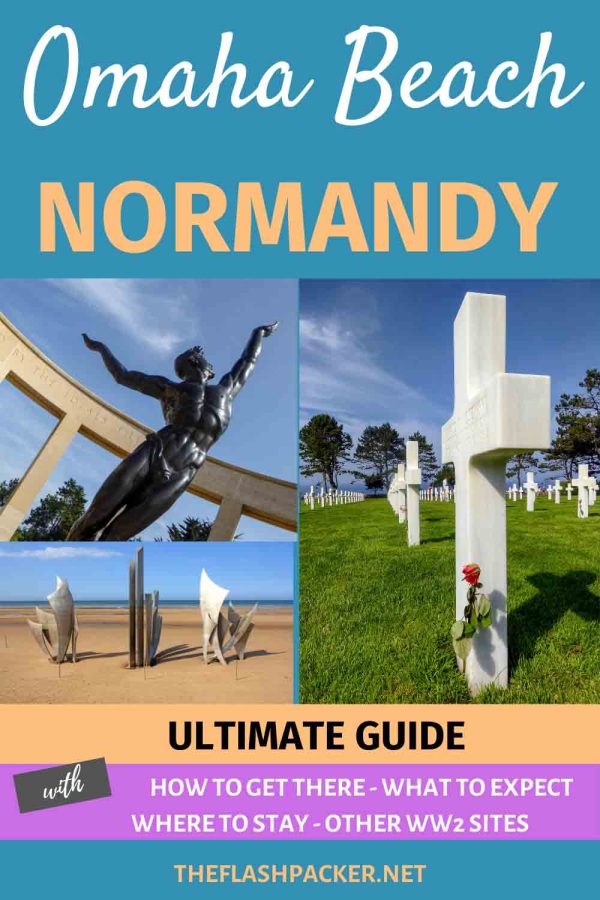

About Bridget
Bridget Coleman has been a passionate traveller for more than 30 years. She has visited 70+ countries, most as a solo traveller.
Articles on this site reflect her first-hand experiences.
To get in touch, email her at hello@theflashpacker.net or follow her on social media.

Thank you. My wife and I were there in 2003. I also think every American who can should come to see this most emotional of all places I have been to. I was not prepared for what I saw and felt. I never felt more proud and grateful to be an American. God Bless. SMK
Very well said. Thank you.